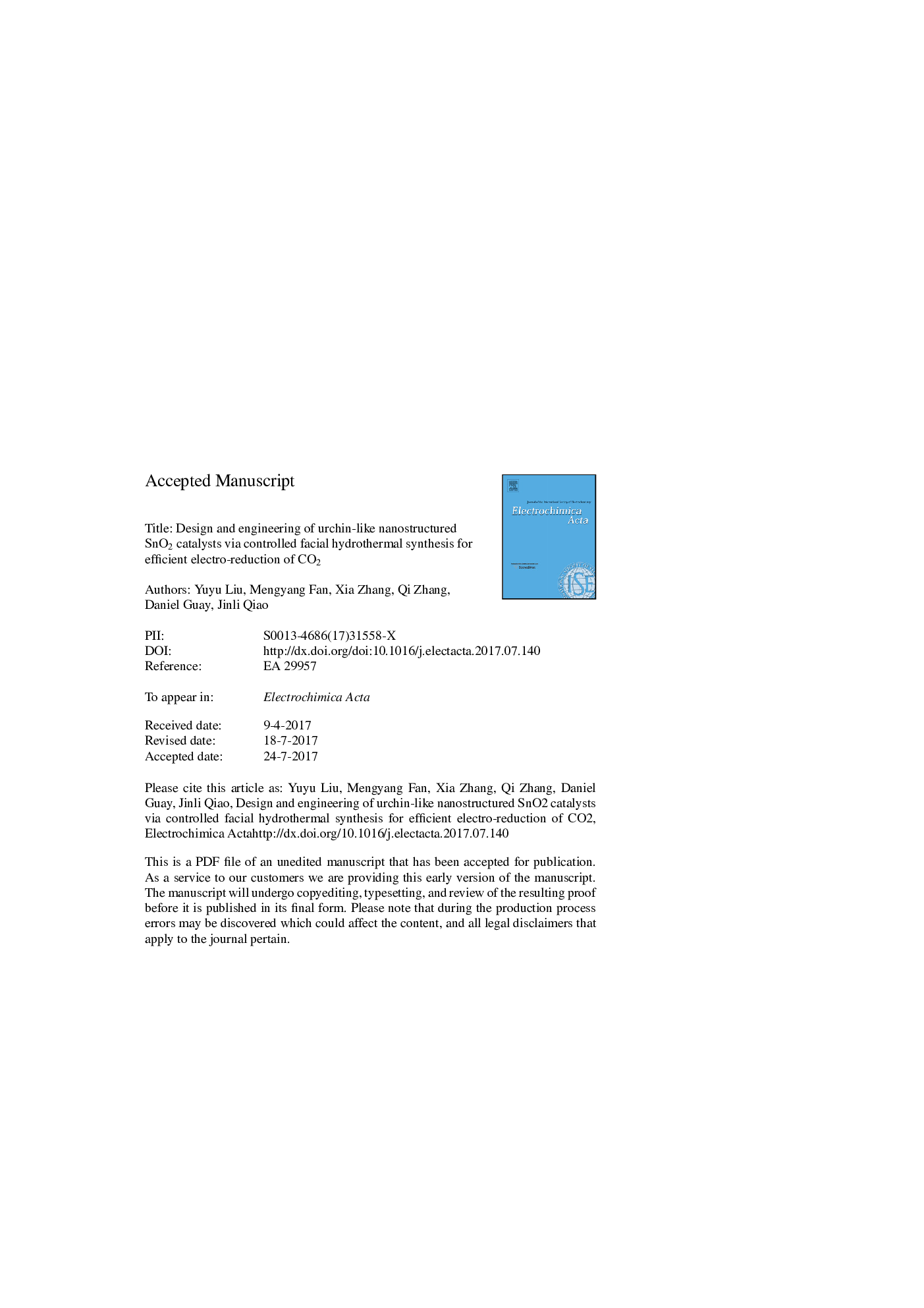| Article ID | Journal | Published Year | Pages | File Type |
|---|---|---|---|---|
| 4766892 | Electrochimica Acta | 2017 | 31 Pages |
Abstract
Although both laboratory and large-scale studies have demonstrated the technological feasibility of electrochemical CO2 reduction (ERC) for producing useful low-carbon fuels, there are still challenges that hinder the practical use of Sn-based catalysts and electrodes in terms of both catalytic activity and stability. In this study, we discuss the design and engineering of several nanostructured SnO2 catalysts via a simple, safe, and low-emission hydrothermal method, targeted at solving low yield, insufficient electrode stability, and specifically high over-potential problems. SnO2 with a novel urchin-like microstructure was developed, which showed high catalytic ERC performance in a CO2-saturated 0.5 M KHCO3 aqueous electrolyte. The composition, morphology, crystal structure, and active surface area of the SnO2 nanocatalysts synthesized at different conditions were thoroughly characterized using SEM, TEM-based selected area electron diffraction (SAED), and XRD. Cyclic voltammetry and linear sweep voltammetry measurements demonstrated that the urchin-like nanostructured SnO2-180-5 (obtained at 180 °C for 5 h) possessed the optimal ERC performance in terms of onset potential, electron transfer, and current density. Such a catalyst exhibited highly selective CO2 reduction to formate, achieving â¼62% Faradaic efficiency at â1.0 V (vs SHE), which is among the lowest overpotentials reported to date for Sn(SnOx)-based catalysts.
Related Topics
Physical Sciences and Engineering
Chemical Engineering
Chemical Engineering (General)
Authors
Yuyu Liu, Mengyang Fan, Xia Zhang, Qi Zhang, Daniel Guay, Jinli Qiao,
